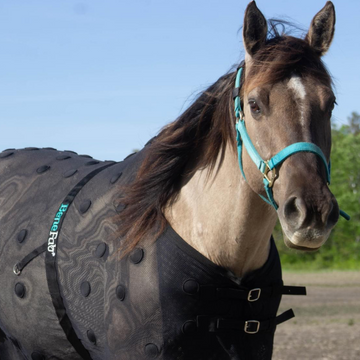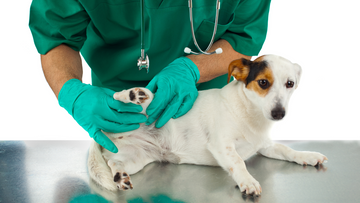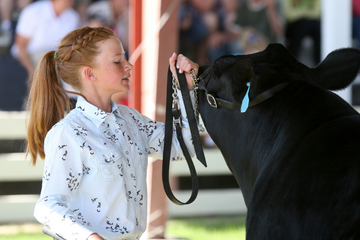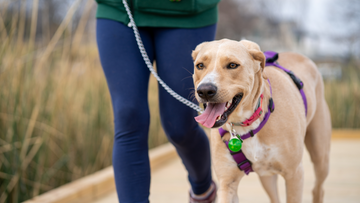The most common bone tumor in dogs is a type of cancer called Osteosarcoma. These are tumors that originate from bone cells and are highly aggressive in nature. They are most commonly seen in older, large breed dogs. Osteosarcoma is an aggressive cancer that often spreads to other parts of a dog’s body. It is diagnosed in 8,000 to 10,000 dogs each year in the U.S. Which accounts for roughly 85 percent of all canine bone tumors.
Other types of tumors: 
Chondrosarcomas - these tumors arise from the cartilage joint surfaces at the ends of bone and generally have a less aggressive tendency to invade and spread.
Fibrosarcoma’s - originate from fibrous connective tissue adjacent to bone, are locally invasive into the bone and have a low tendency to spread.
Synovial cell carcinomas - originate from joint tissues and invade the associated bone. These tumors are less aggressive than Osteosarcomas.
Signs and Symptoms:
1. Lameness that doesn’t go away
2. Swelling or a mass
3. Difficulty eating
4. Neurological signs
5. Breathing difficulties
6. Lethargy
While Osteosarcoma can occur in any bone in a dog’s body, the limbs account for 75 to 85 percent of all affected bones. This is called ‘Appendicular Osteosarcoma’. Other cases are found in the axial skeleton, including the maxilla, mandible, spine, cranium, ribs, nasal cavity, para-nasal sinuses and the pelvis. Unfortunately, the cause of Osteosarcoma in dogs is not currently known. There are several theories and factors that seem to be associated to cancer.
Factors may include:
- Diets that encourage a rapid growth rate
- Fractured bones or cell damage
- Genetic mutations
- Previously spayed or neutered
- Prior surgery
Definitive diagnosis of this cancer type involves getting a tissue biopsy. Either at the time of surgical removal of the tumor, often with an amputation, or with a biopsy before surgical amputation. The therapies offered to us do not cure this cancer type, but can greatly extend their life while providing a very good quality of life. Many owners of dogs diagnosed with Osteosarcoma choose not to pursue amputation and focus instead on giving their pets the best quality of life for the time they have left.
To assist dogs going through this awful disease, and above all to assist in pain management Benefab®
Canine Comfort Shirt fabric emits far-infrared rays, keeping muscles, joints, tendons, and ligaments supple and relaxed. The shirt provides supportive compression for anxiety and comfort. It helps harmonize bodily functions safely and naturally stimulating recovery time, promoting blood circulation, increasing oxygen flow, and ultimately reducing pain and stiffness. Material is also breathable with wicking qualities. Keep your dog comfortable and on the right track with our line of canine therapeutic products.






















